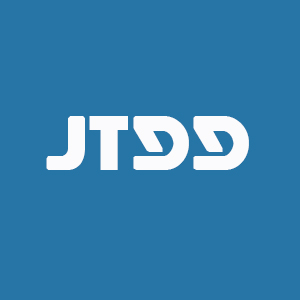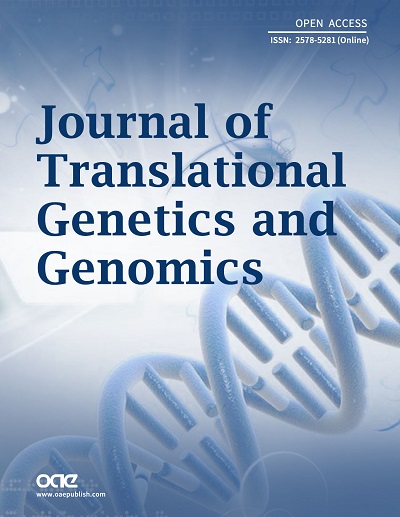Unraveling the genetic tapestry of neurodevelopmental disorders: a new horizon
In the realm of neurodevelopmental disorders, the confluence of genetics and neurology heralds a promising frontier for understanding and treating conditions that have long eluded definitive elucidation. This Special Issue on “Genetic Neurodevelopmental Diseases” encapsulates a pivotal moment in this journey, showcasing pioneering research that bridges the gap between genetic anomalies and clinical manifestations. As we delve into the complexities of these disorders, the contributions within this issue not only illuminate the intricate genetic underpinnings but also pave the way for innovative therapeutic strategies, underscoring the transformative potential of genetic research in neurodevelopmental science.
The first article by Aledo-Serrano et al. thrusts us into the enigmatic world of developmental and epileptic encephalopathies (DEEs), challenging us to reconsider our approach when genetic testing falls short of providing answers[1]. This work underscores the imperative for continuous genetic reevaluation and the embracing of novel diagnostic paradigms, setting a tone of resilience and innovation that resonates throughout this issue.
Turning our gaze toward the intricate landscape of Moebius Syndrome, Lyulcheva-Bennett et al. provide a comprehensive exploration of its etiology and management[2]. Their meticulous dissection of this rare condition not only broadens our clinical understanding but also propels us toward a more holistic and empathetic approach to patient care, reminding us of the profound impact of our work on human lives.
The third contribution, from the collaborative efforts of researchers delving into the genetic underpinnings of neurodevelopmental disorders, serves as a testament to the power of collective inquiry[3]. This article not only advances our scientific knowledge but also fosters a sense of community among researchers, clinicians, and families, united in their quest for answers and hope.
A recurring theme across the articles is the paradigm shift toward personalized medicine, highlighting the transition from one-size-fits-all to tailored treatment strategies that consider the unique genetic makeup of individuals. This approach is particularly resonant in the field of neurodevelopmental disorders, where genetic diversity plays a pivotal role in disease manifestation and progression. Furthermore, the importance of genetic reanalysis emerges as a critical insight, reflecting the dynamic nature of genetic research where today's inconclusive results may hold tomorrow's answers. The articles collectively underscore the burgeoning role of technology, from next-generation sequencing to advanced bioinformatics, in accelerating research and enhancing our understanding of complex genetic landscapes. These themes collectively signal a new era in the management and treatment of genetic neurodevelopmental disorders, characterized by a deeper, more nuanced understanding of genetic variability and its clinical implications.
Navigating the field of genetic neurodevelopmental disorders presents several formidable challenges. The inherent heterogeneity of these conditions complicates diagnosis and treatment, as patients with seemingly similar genetic alterations can exhibit vastly different clinical presentations. Current technological tools, while advanced, are not yet fully capable of deciphering the complete spectrum of genetic variations and their interactions with environmental factors. Moreover, the absence of comprehensive, standardized patient databases limits the ability to draw broad, generalizable conclusions, hindering the development of effective, widely applicable interventions.
As we look to the future, these articles collectively underscore the burgeoning potential of genetic research in transforming the landscape of neurodevelopmental disorders. They beckon us to venture beyond traditional boundaries, to explore the synergies between genetics, environmental factors, and innovative therapies. The path ahead is fraught with challenges, yet it is ripe with the promise of discoveries that could redefine our understanding and treatment of these complex conditions.
CONCLUSION
The research featured in this Special Issue represents a significant stride toward demystifying the genetic bases of neurodevelopmental disorders. It underscores the intricate interplay between genetics and clinical outcomes, heralding a new era of diagnosis and treatment. We extend our deepest gratitude to the dedicated researchers and the broader community for their unwavering commitment to this field. Their collective efforts illuminate the path toward a future where the mysteries of genetic neurodevelopmental diseases are unraveled, offering hope for improved care and enhanced quality of life for affected individuals and their families.
Future research must prioritize interdisciplinary collaboration, uniting geneticists, neurologists, bioinformaticians, and psychologists to foster a holistic understanding of neurodevelopmental disorders. Advancements in genetic sequencing technologies and bioinformatics are crucial for uncovering the nuanced genetic architecture of these conditions. Integrating research findings into clinical practice will enhance personalized medicine approaches, ensuring that treatment strategies are tailored to the individual's genetic profile. The exploration of environmental and epigenetic factors will also be vital in comprehending the full scope of these disorders.
In conclusion, this Special Issue is not an endpoint but a beacon, guiding us toward a future where the mysteries of genetic neurodevelopmental diseases are unraveled, and the lives of those affected are profoundly improved. Let us carry forward the torch of inquiry, collaboration, and compassion that has been so vividly ignited within these pages.
DECLARATIONS
Authors’ contributions
The author contributed solely to the article.
Availability of data and materials
Not applicable.
Financial support and sponsorship
None.
Conflicts of interest
The author declared that there are no conflicts of interest.
Ethical approval and consent to participate
Not applicable.
Consent for publication
Not applicable.
Copyright
© The Author(s) 2024.
REFERENCES
1. Aledo-Serrano A, Sánchez-Alcudia R, Toledano R, et al. Developmental and epileptic encephalopathies after negative or inconclusive genetic testing: what is next? J Transl Genet Genom 2021;5:443-55.
2. Lyulcheva-Bennett E, Blumenow W, O’Connor A, Kelly M, Bennett D, Fattah A. Towards an understanding of the aetiology, genomic landscape and management of Moebius syndrome. J Transl Genet Genom 2023;7:259-73.
Cite This Article
How to Cite
Striano, P. Unraveling the genetic tapestry of neurodevelopmental disorders: a new horizon. J. Transl. Genet. Genom. 2024, 8, 278-80. http://dx.doi.org/10.20517/jtgg.2024.40
Download Citation
Export Citation File:
Type of Import
Tips on Downloading Citation
Citation Manager File Format
Type of Import
Direct Import: When the Direct Import option is selected (the default state), a dialogue box will give you the option to Save or Open the downloaded citation data. Choosing Open will either launch your citation manager or give you a choice of applications with which to use the metadata. The Save option saves the file locally for later use.
Indirect Import: When the Indirect Import option is selected, the metadata is displayed and may be copied and pasted as needed.
About This Article
Special Issue
Copyright
Data & Comments
Data















Comments
Comments must be written in English. Spam, offensive content, impersonation, and private information will not be permitted. If any comment is reported and identified as inappropriate content by OAE staff, the comment will be removed without notice. If you have any queries or need any help, please contact us at support@oaepublish.com.